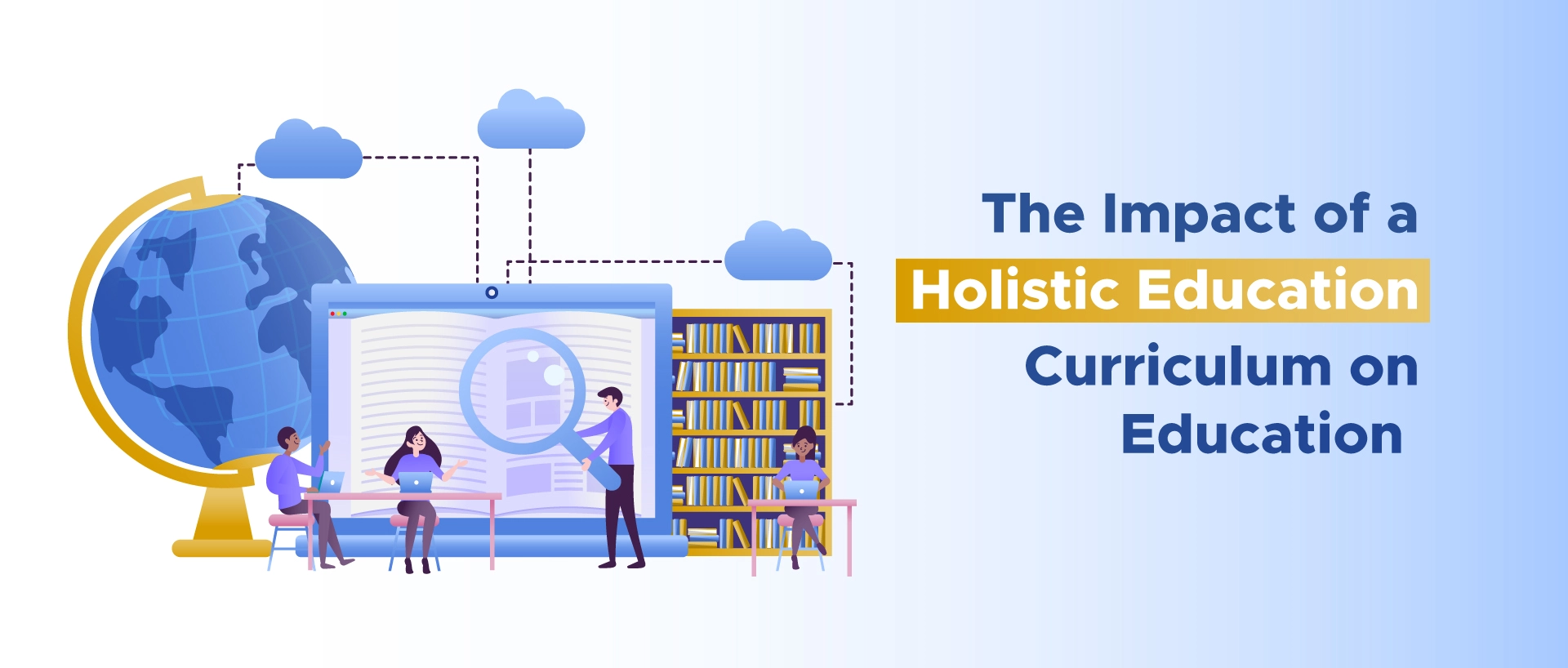
In the old and traditional days of the education system, students were taught inside the four walls of the classroom. This isolated approach has led to fragmented learning experiences for them. However, there is a growing recognition of interconnected and holistic learning.
The education industry is aware of the fact that students need more than just a strong foundational curriculum. It indeed seeks to be supported by a community and to develop a thoughtful understanding of the elements around them.
Educational curriculum is a dynamic route that must adapt to the changing needs of students and society. Over the last decade, there has been a constant growing demand for a holistic education curriculum. This unique approach goes beyond academic subjects and focuses on the student's overall development.
A holistic curriculum is an innovative approach to teaching and educating students. It addresses the social, ethical, and academic needs of students in an integrated learning format. In this approach, the emphasis is placed on creating a positive learning environment and whole-child support. It includes academic and non-academic needs or wrap-around support to students.
A holistic curriculum considers the diverse learning styles and backgrounds of students. They are taught to reflect on their actions and how they will impact and learn from the global community. Teachers engage students with projects that apply critical thinking to solving real problems.
Time changes and it creates the need to refine existing education models. With advancements in technology, students are more exposed to digital gadgets. So, the innovative capabilities of students have been boosted and can not only be judged academically. Let us see why holistic education is needed.
Education is a vast system, and it is considerably impossible to predict its future behavior. The system's parameters show a good rate of change. It emphasizes the integration of social, physical, emotional, and cognitive aspects of learning to form well-rounded students.
It has been noted that holistic education curriculum development services can open doors for enriched academic performance, maintaining good mental health, and overall well-being. The approach offers students a bundle of opportunities and helps them explore their interests, develop social skills, and learn about their own emotions.
The interdisciplinary curriculum is like creating a learning approach where subjects are combined with a holistic understanding. It is not about studying science, math, or literature separately but blending them into a well-filled knowledge.
For instance, learning about climate change. Interdisciplinary curriculum education does not just focus on the science behind it. But it also brings in math to analyze data trends, geography to explore the global impact that it creates, and language to express ideas through writing. The technique is similar to blending different colors all together to create a more vibrant and clear picture.
Interdisciplinary learning is not only the blend of different subjects. It is a symphony of knowledge that balances diverse rules for a deep-seated educational experience. It develops critical thinking, encourages creativity, and prepares learners for a positive future.
Here are some examples of holistic teaching and learning approaches that embrace a well-rounded educational experience.
These innovative holistic curricula aim to build not only academic knowledge but also essential life skills among students. Many education institutions often resort to availing professional workbook development services to create guides and refine student's learning.
Bonus Read: Types of Educational Content for Teaching
There are numerous benefits that holistic curriculum education offers for both students and teachers alike. Let us learn a few prominent ones.
Holistic learning creates a deep, blended comprehension of subjects. By combining various disciplines, students can grasp complex concepts, promoting a deep-rooted understanding that goes beyond isolated facts.
This approach to teaching and learning provides students with skills that can be applied to real-life situations. It formulates critical thinking and problem-solving skills and will not only help them in the current situation but also prepare them for future careers. This technique creates a sense of purpose and usefulness in students, making their learning experience more meaningful and engaging.
A holistic education curriculum allows students to be creative. It is like mixing unique colors to form a new one. When different subjects bleed together, it creates a different thought process each month for students. Hence, it creates new ideas and finds the easiest solutions for decoding issues.
The approach of holistic education understands and respects individual learning methods. Personalizing lesson plans to incorporate multiple subjects allows students to engage with the learning resource in ways that match their interests. This personalized approach enhances students' learning, boosts their morale, and makes their learning journey more meaningful.
Interesting Read: A Closer Look at Curriculum Trends in Education
Creating a holistic education curriculum betters the learning experience of students. It goes beyond the subject boundaries that teachers had provided in traditional settings. STEM curriculum development also offers a holistic learning approach to students. It makes students feel more connected to their learning and education. It develops critical problem-solving skills and boosts their creativity to navigate a complex and challenging world.
Through interdisciplinary projects, collaborative planning, and thematic units, teachers can assist students in developing a holistic understanding of the world. They can become lifelong learners; the approach will assist in their future careers and make them good citizens who contribute to the betterment of society.
Share